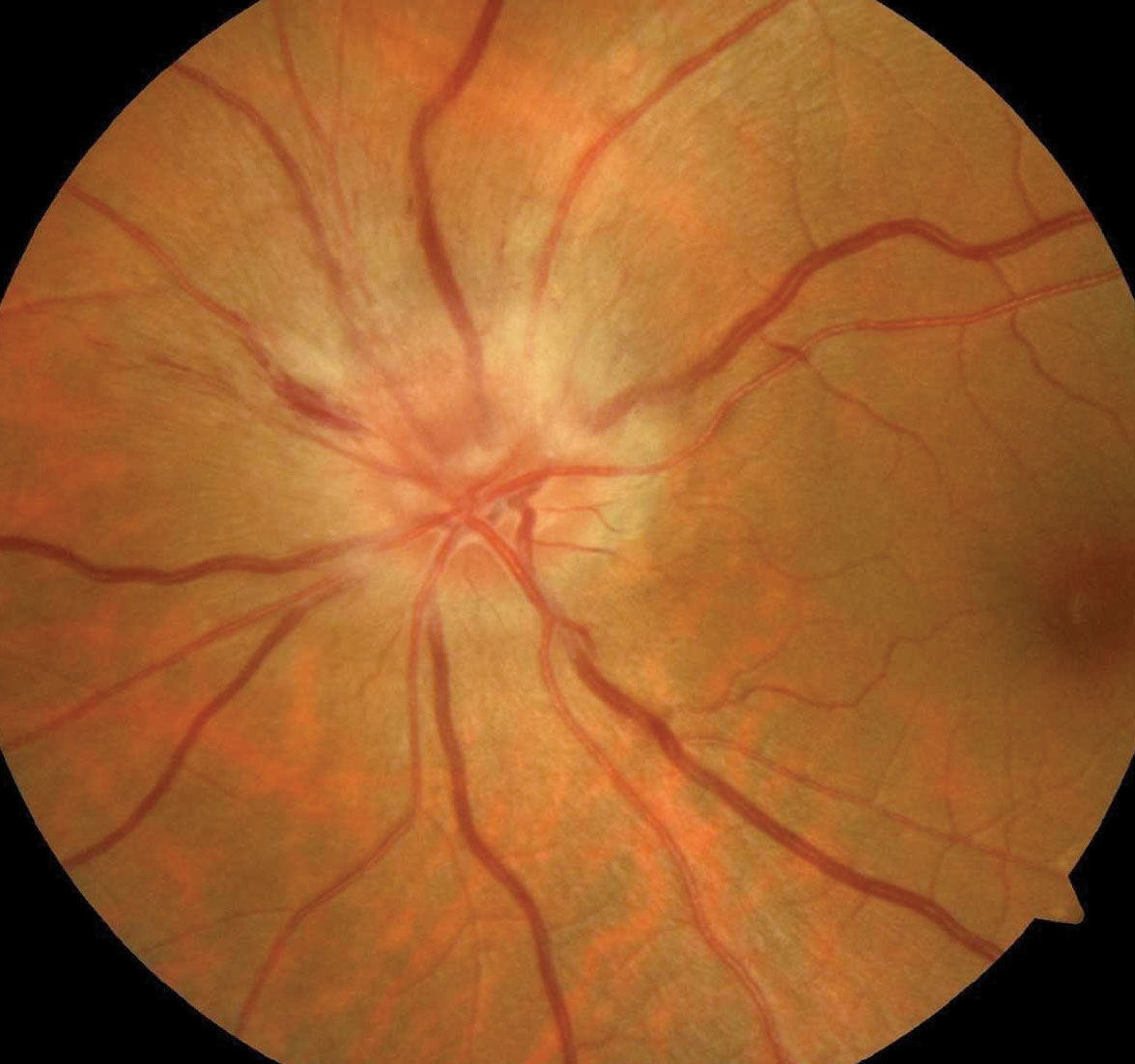 |
|
Diabetes, greater initial VF damage and severe sleep apnea were found to be risk factors for fellow eye involvement in NAION. Photo: Neil Miller, MD. Click image to enlarge. |
Nonarteritic anterior ischemic optic neuropathy (NAION) is the second most common optic neuropathy in the over-50 population, with its incidence increasing. In this study, researchers investigated the possible risk factors for fellow eye involvement in patients with NAION. To the best of the authors’ knowledge, this is the first retrospective longitudinal cohort study about the risk factors for fellow eye involvement in NAION with relatively complete systemic and ocular follow-up information in China.
A total of 113 patients with unilateral NAION attack were included and divided into two groups according to whether fellow eye involvement was present over a mean follow-up period of 2.7 years. General characteristics including age, sex, diabetes, hypertension, hyperlipidemia and obstructive sleep apnea syndrome, as well as ocular characteristics including initial best-corrected visual acuity (BCVA), initial visual field (VF) damage of the first eye and the presence/absence of a crowded disc, were analyzed and compared between the two groups. Cox regression was used to assess the risk factors for fellow eye involvement.
The study showed that diabetes, greater initial VF damage and severe sleep apnea were found to be risk factors for fellow eye involvement in NAION. During the follow-up period, 40 patients developed fellow eye involvement. The initial mean deviation in patients with fellow eye involvement was significantly poorer than in those without, and patients with poorer initial mean deviations had shorter attack intervals between the two eyes.
“We further found that the risk of fellow eye involvement increased as the initial mean deviation deteriorated; a poorer initial mean deviation indicated a higher risk of fellow eye involvement,” the authors explained. “The reason for the close relationship between initial VF damage and second eye involvement might be attributable to more complicated and serious pathogenic factors that lead to more severe initial optic nerve damage. For example, there might be some severe anatomical disc changes.
“To the best of our knowledge, this was the first detailed quantitative analysis of first eye VF damage and fellow eye involvement. However, no significant difference was found between the two groups in terms of the initial BCVA. Because the BCVA only represents central vision, as opposed to the much wider area that the VF represents, we considered the VF results to be more reliable.”
Diabetes was observed in 30 of the 113 NAION patients, which is much higher than the Chinese adult population. Previous studies have found that diabetes, bilateral optic disc drusen and noncompliance with continuous positive airway pressure increased the risk of fellow eye involvement in NAION.
Furthermore, patients with diabetes had a significantly shorter interval (median: 14 months) before fellow eye attacks than did normoglycemia patients (median: 122 months).
The authors concluded in their paper that more intensive follow-ups might be needed for patients with these risk factors.
Li X, Guo T, Zhang Y, et al. Risk factors for fellow eye involvement in patients with nonarteritic anterior ischemic optic neuropathy. Ophthalmic Res. December 9, 2022. [Epub ahead of print]. |

